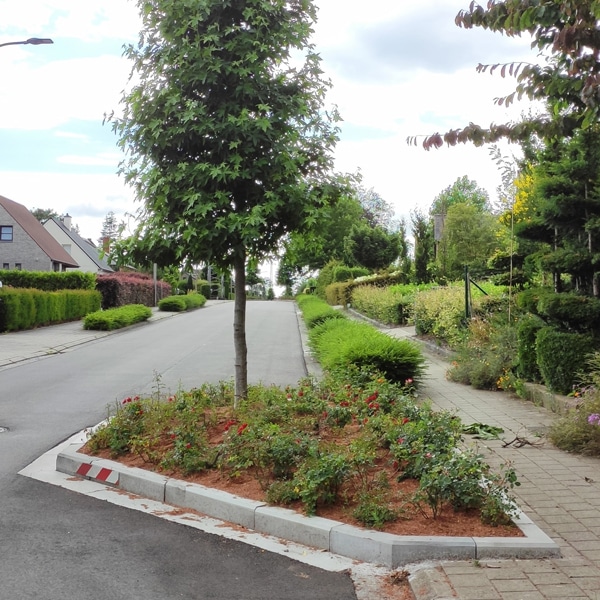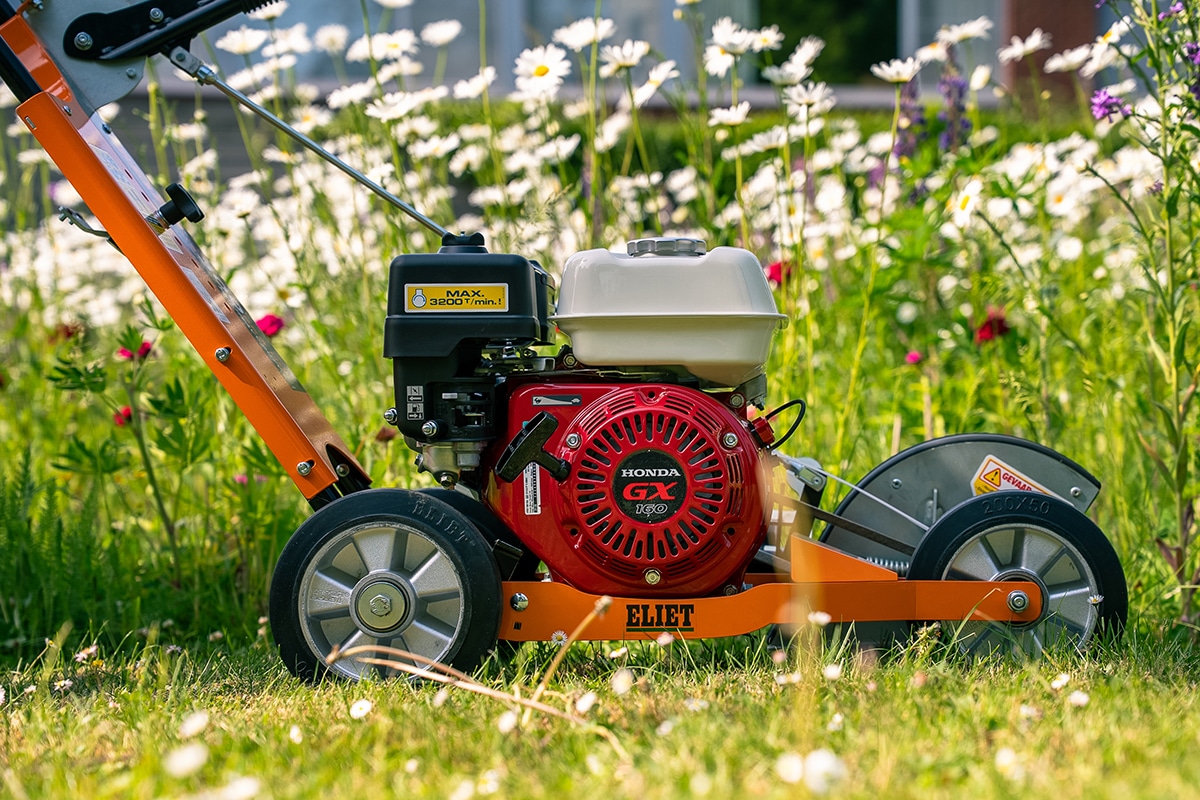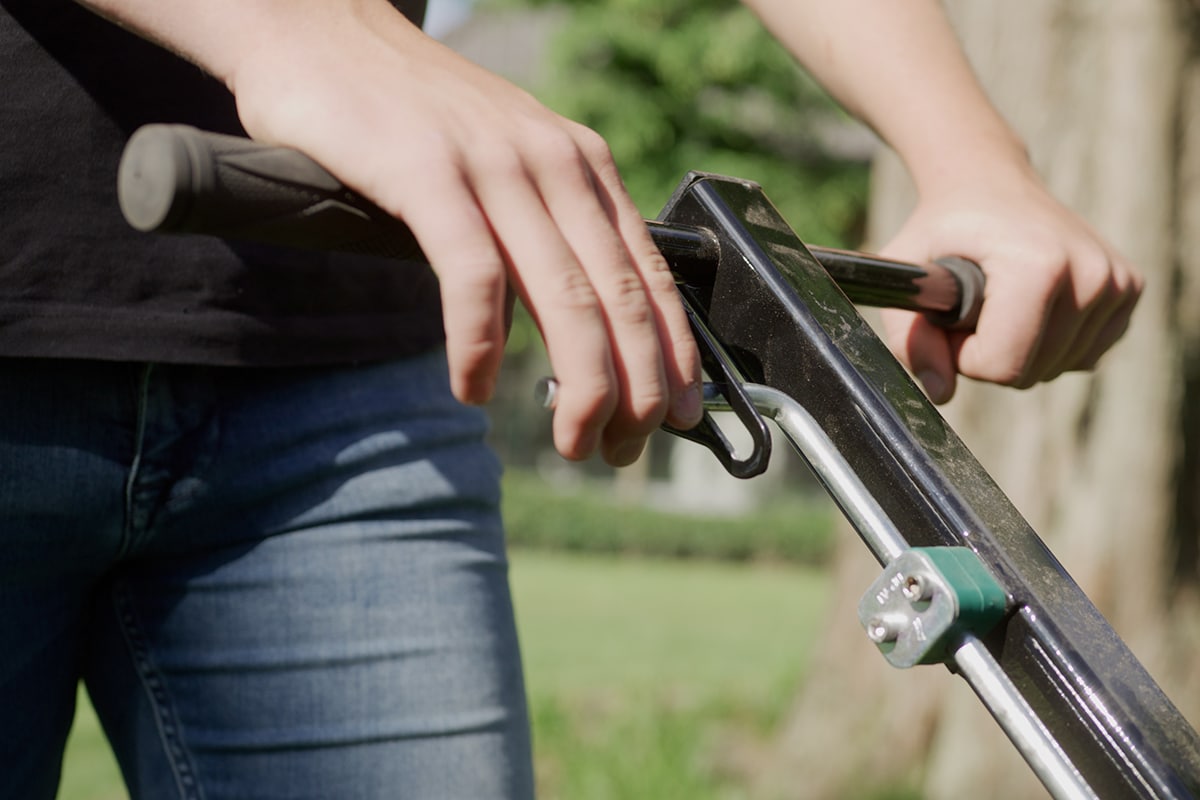
PDPO project compiles East Flanders case studies
Towards an efficient water management with green areas
Due to the changing climate and the succession of water scarcity and flooding, it is sometimes difficult to maintain the quality and functionality of green zones. The PDPO project 'Naar een efficiënt waterbeheer met groenzones' responds to this and wants to bundle knowledge and practical examples on efficient water management on the basis of elaborated demonstrative green zones in East Flanders. and spread.
Text Eva Reybroeck & Jesse Tavernier | Image PCS
The extreme weather conditions of recent years have not escaped anyone's notice. Never since records began has the precipitation deficit in the run-up to summer been so great, and for the fourth year in a row we have faced exceptional drought in recent months. The winter months, on the other hand, are getting wetter, resulting in seasonal flooding. Trees and plants suffer as a result.
However, by choosing drought-tolerant plants and techniques for efficient water management when constructing and maintaining green spaces, you can create climate-resilient green spaces. PCS is researching and demonstrating the possibilities in three East Flanders municipalities and discusses the initial results in this article.

At PCS, a wadi was planted with various vegetation types.
Demonstration projects
Last spring, three demonstration zones were established in Oudenaarde, Dendermonde and Aalter. Various soil preparation and improvement techniques were applied; the use of cover materials and anti-evaporation agents is also demonstrated. Various planting types for a wadi are also being tested at PCS.
The various green areas are monitored on a regular basis by PCS. Plant quality (including failure, flowering, growth, stress indicators...) is assessed and soil moisture levels measured. In turn, the municipalities record how frequently the plantings need water.
Better flowering and growth
In Dendermonde, the Hagewijk park was planted with different shrubs: Berberis, Symphoricarpos, Hydrangea, Hypericum, Spiraea, Rudbeckia and Nepeta. Various soil additives (compost, bentonite granules, water polymers and a combination of the three) were used in the planting and compared to an untreated soil. The additives make the soil retain water better, creating a water buffer in the green spaces and reducing the need for frequent watering. Compost and the combination of soil additives have already been shown to improve flowering and growth in Nepeta.
Higher soil moisture content
In Oudenaarde, roses were planted in eight green areas and the products Karisol, Oenosan and TerraCottem are being tested. Karisol is an organic soil conditioner, which increases the organic matter content in the soil and improves plant growth; Oenosan is a natural lime fertilizer that activates plant defenses; and TerraCottem is a physical soil conditioner that, due to the biostimulants and water polymers present, also increases resistance to drought stress. Compared to the control, all of these products increased soil moisture content, although it remains to be seen whether the green areas effectively require less water as a result.
Container mulch was additionally applied as a ground cover on half of the planting areas. This resulted in a 17.8 % higher soil moisture content than in the green areas without container mulch.

Container mulch was applied to planting beds in Oudenaarde, with a clear impact on soil moisture content.
More biodiversity in wadis
Increasingly extreme weather conditions also make it necessary to conserve our sewers and maintain the underground water table, for example by constructing wadis and infiltration basins. Instead of planting these basins - as is usually done - with a uniform, monotonous grass mixture, two wadis were constructed on PCS grounds to demonstrate alternative infills.
In the first wadi, two substrate types are demonstrated: a sand substrate on the one hand and a clay substrate on the other. Both were planted with adapted planting with high tolerance to exchange moisture. Using van Iersel's system, the water level in the wadi can be artificially adjusted to create both wet and dry conditions, and the plantings can be optimally monitored.
In turn, the second wadi will be used to demonstrate different natural vegetation types, specifically natural vegetation with mowing management, a zone with natural herb/flower mixtures and a zone with native shrubs.
Let's hear from you!
To further develop the project, PCS is seeking feedback from the sector. What techniques around water management are already applied? What are your experiences with these? What are the effects of prolonged droughts on the construction and management of green spaces? Do you know of any inspiring examples of water-efficient designs?
Research with support from the Flemish Government, the Agency for Innovation & Enterprise, the European Union, the Province of East Flanders, Boerenbond and AVBS, the ornamental plant and greenery federation.




